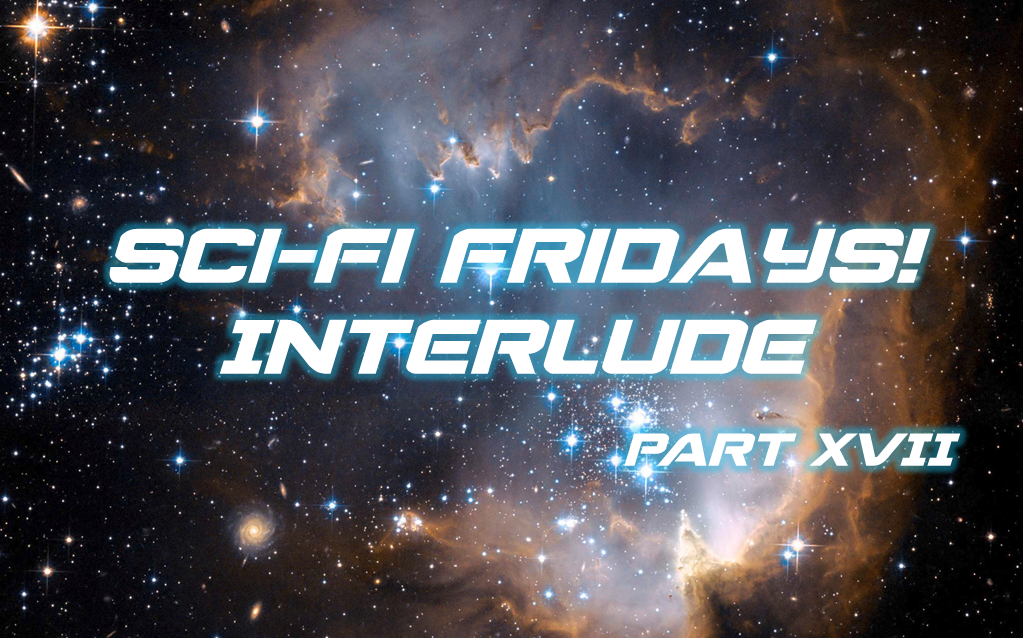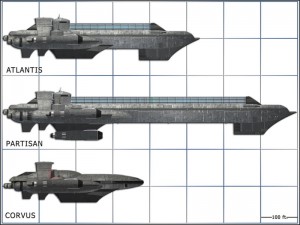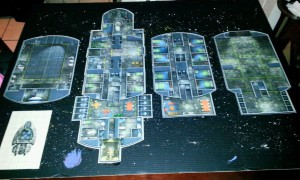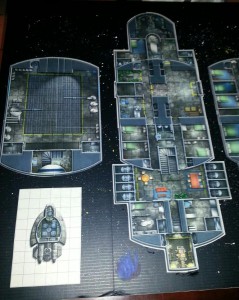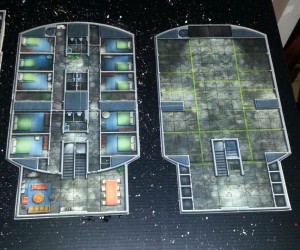We interrupt our regular feature for this special interview! Last week I posted part 1 of the Journeyman’s Gazette, and next week we’ll return to the Outlands and part 2. However, on parts 15 of this series I sang the praises of the Future Armada Series, and specifically the Exeter which is the one we’ll be using during the game as the character’s ship.
The creator of the Future Armada and Armada Codex series, Ryan Wolfe, was kind enough to grant me an interview about the series. I would like to use this week’s post to share the answers with you. I hope you find the information interesting and useful. Check out his products, they are excellent for any sci-fi campaign (and he’s got some fantasy maps too).
Week you next week for Part 18, Part 2 of the Journeyman’s Gazetteer!
And interview with Ryan Wolfe of 0 hr – art & technology
Sunglar: Ryan Wolfe, I know you as the maker of those wonderful sci-fi maps, but who exactly is Ryan Wolfe? How did you get into gaming?
Ryan: I’ve been a gamer since being introduced to D&D around 1980. I’ve gone through RPG, video, and board game phases but have always loved sci-fi and star ships in particular. I saw Star Wars when it was first in the theaters when I was ten and that’s what started it all for me. I was also into computers and, after getting some degrees in that, ended up programming video games in Austin and Seattle. This is where I picked up my rudimentary skills in Photoshop and 3D Studio – the art guys were kind enough to show me around the basics and let me experiment on my own.
I had a solid gaming group throughout high school (this was “back in the day” and the parents of one of my religious friends really did burn his collection of D&D books when they found them!). Gaming during college was off and on, but really picked up again once I landed in a video game company. Our common interests (and LAN setup) lead to long hours of Ultima Online and Everquest which then turned into a table top group when D&D 3.0 came out. I’ve been pen-and-paper gaming since.
Over the last couple years I’ve also gotten into board games and am currently working on a board game design of my own. Titled “Darkstar Corsairs”, it uses my star ship miniatures and is set in part of the Future Armada universe. It is currently in early play testing and I hope to bring it to Kickstarter somewhere in late 2014 or early 2015.
Sunglar: How did you start doing the Future Armada and Codex Series?
Ryan: My programming career was put on hold after my wife and I relocated to Louisville for her job and decided to have a kid while we were at it. I became a stay-at-home dad and needed something productive to do on my own schedule. I was friends with some guys who knew Margaret Weise, Larry Elmore, Jim Ward, and other stars of the tabletop gaming world. This lead to my work on the Serenity, Battlestar Galactica, and Metamorphosis Alpha RPGs; we also founded BlackWyrm Games (now BlackWyrm Publishing) to create our own role playing game supplements. This endeavor taught me a lot about the business side of things and cemented my transition from video to pen-and-paper game development.
I’ve been fortunate to have been part of several good role playing campaigns over the years and particularly enjoyed making maps and handouts (what we called the “arts & crafts” side of the game) for the games I would run. I was creating ships and deckplans, plus NPCs and backstories, so it wasn’t too much of a stretch to polish and package some of these up for public consumption. My skills, software, and interests all lead me towards creating Future Armada. Though I created it originally as a member of BlackWyrm Games, I always retained the rights – keeping it as my own when we eventually split up the company and I moved on to Pittsburgh. This move was again because of my wife’s career – and I should take the opportunity to thank her (and that career) for keeping me fed and housed while I work on spaceships 🙂 .
Once I discovered RPGNow.com, I saw that it really was feasible to create and sell downloadable documents and so decided to give it a shot. Morningstar, my first issue, was released in December of 2004. I’ve also created some fantasy maps and even a full-blown d20 Future module, but the starships have been the only line to really take off. These are what I enjoy the most anyway – so that’s where I have focused my efforts: first with “Future Armada”, and now the “0 hr Armada Codex” line.
Sunglar: What are the differences between the Future Armada and Armada Codex Series?
Ryan: The short answer is that the Codex is a modernized continuation of the Future Armada Line.
The long answer is that Future Armada provides statistics using the d20 Future rule set. This was fine in 2004 but makes no sense in 2014. Codex provides generic statistics in the hope that they can be easily converted to the payer’s system of choice. Also, each Future Armada issue focuses on a specific ship and details its history and crew. Codex focuses on a class of ships rather than a specific vessel. This is because I envision each issue of the Codex as a chapter in a larger ship registry or retrospective. Also, after 20 issues of Future Armada I found that my character concepts for crew members were running a bit thin. It’s always been about the ships and the new format emphasizes this.
On the technical side, Codex uses layered PDF files. This means that a single map page can be set to show a grid, or black and white version, with the click of a button. It’s more efficient than having different documents for each version – though the iPad has still some technical issues to work out. In the main book, layers are used to turn off background art and/or images in order to provide a printer friendly version. There are other minor differences, like I’m creating the original art at a higher resolution now because newer computers can handle it, but the points discussed here are the big things.
Sunglar: I know the Future Armada had stats for the Future OGL rules (i.e. the D20 Future rules). Have you considered converting them to other systems?
Ryan: Though I wasn’t ever a huge fan of the d20 Future rules, they were Open Content (meaning free to use without having to go through a lengthy licensing process). I was playing and running d20 Star Wars games at that point and so would rather have used those statistics – but licensing issues made it impossible. My hope was that the d20 Future stats would provide some guidelines to make conversion to your actual system of choice easier. I did post some stats for the Serenity RPG and there were fan-made compilations for Traveler and Star Wars. I used to have these on my website, but they’ve been lost over time and were never in high enough demand to keep up to date with each release.
With Armada Codex I’ve stopped including d20 Future stats and instead am giving a system-free description of the various statistics and components. Though converting “tons” from system to system can still be a challenge (for example, I use the “register ton”, which is 100 cubic feet of volume, while Traveler uses the weight of displaced liquid hydrogen) most of the other components are pretty straight forward to convert from my descriptions to game stats.
Sunglar: Why did you start the Starship Map Poster Images Kickstarter projects?
Ryan: I’ve always envisioned the maps on posters, even designing several to specifically fit within a 24×36 inch image. When I discovered Kickstarter and saw how it works, I realized that I finally had an opportunity to see if enough people would be interested in the posters to make a print run feasible.
The miniatures were actually an unintended side effect. I create 3D models in order to make the renderings I use for the maps and bonus art. I learned about 3D printing at Shapeways.com and thought it would be trivial to have them 3D print my existing 3D models so that I would have something extra to offer backers who wanted it. Well, it turns out that my models are built to look good, not to print well. Everyone has to be rebuilt almost from scratch in order to produce a usable 3D print. It also turns out that Shapeways is not good at mass producing miniatures – it’s both really expensive and unreliable. Luckily I knew someone who did resin casting and so learned how to take a single 3D print master and hand cast copies myself. It’s not an easy process but people really liked the miniatures and so that’s the route I went. I have to admit that I like them quite a bit too. Even though they are small, it’s just cool to have a physical version of the ship to play with.
Sunglar: What have been the benefits of going the Kickstarter route?
Ryan: Just like the Future Armada line of digital products would not have been possible without RPGNow.com handling the storefront, payment, etc., there is no way I could have produced and sold a line of physical posters and miniatures without Kickstarter. I just don’t have the time or technical savvy to market and mange such a thing – plus the risk free structure (with a project only going forward if it hits its funding goal) is vital. It would have been really hard for me to pay for a print run of posters before I knew that anyone wanted one. Kickstarter has also been a great place to let people know about the Armada. While many of the backers come from the digital products, a fair number go the other way as well – first discovering the ships on Kickstarter and then finding the digital products from there.
Though I’m concerned about all the big corporations moving in and using Kickstarter as a glorified pre-order system, it has been a really good for me. I definitely would not have been able to move my ships onto posters without it.
Sunglar: Are we getting more Starship Poster Maps and Armada Codex? (I sure hope so!)
Ryan: My plan is to produce one more issue of Future Armada to bring that line to a nice even 20 issues. Issue number 19 was a “Redux” – a reworking of previous designs – and issue 20 will finish in that same vein. I have at least half a dozen ship designs in mind for the Armada Codex line and hope to continue that line for the foreseeable future. I’m creating each Codex issue like a chapter in a book and, someday, hope to put them all together into an actual (hard copy) tome.
The physical posters and miniatures will continue for as long as people still want them and I have ships that will fit onto paper. I think that I’ll have to get more creative with layouts and multi-poster designs to keep things fresh, but I’m looking forward to trying it. I just recently teamed up with Trollforged Miniatures to help with miniature production. If I can send them a master and let them do the casting I will save a lot of time, which will let me work on the more creative aspects of the projects. It should also result in a better product while costing backers less – so a win/win situation there. They are casting the miniatures for the Mourningwolf project and, so far, they have been awesome.
Sunglar: Do you produce them in any sort of schedule?
Ryan: I don’t have a schedule other than something general like “let’s get three digital issues and three Kickstarters done for 2014”. I usually have the next three or four projects in mind, and at least two in production, simultaneously and try to synergize where possible. Over the last several months things have been more complicated as I work on getting my board game put together. That’s going on alongside the usual Armada and Kickstarter projects and so is slowing both down somewhat. But speaking of synergy, because I needed a Mourningwolf miniature for the board game, I used that for my current Kickstarter. I also needed a certain type of freighter for the game and so created a miniature for that. Since I have the miniature, I’m going to make an Armada Codex issue to map out and describe it, and then all that will make up half of a future Kickstarter campaign (probably with Renegade on the front of the poster, this freighter on the back, and miniatures for both).
Sunglar: What other products do you have available besides the ones already mentioned?
Ryan: Let me separate the digital (downloadable) stuff from the physical items:
As of May 2014, there are 19 issues of Future Armada and 2 issues of Armada Codex online at RPGNow.com and Paizo.com. I also have half a dozen digital fantasy maps, as well as digital versions of the Kickstarer posters, at RPGNow.
For physical products, I have a Kickstarter running for the Mourningwolf poster and miniature. The posters and miniatures from the previous Kickstarter campaigns are available at my website (0-hr.com).
Sunglar: You originally published your products as Ki Ryn Studions, why Ki Ryn Studios became 0hr: art & technology?
Ryan: Ki Ryn Studios was my first business attempt – created to continue the Future Armada line when I split from BlackWrym. As an aside, the name “Ki Ryn” is based on the “Ki Rin” (a “Japanese unicorn” I first encountered in the 2nd Ed Monster Manual). I used RYN as my tag on Asteroids and Space Invaders since “RYAN” had too many letters, so that’s where the misspelling comes from. Anyway, after several years I realized that this self-employment thing might actually work out long term. I was looking at doing freelance programming and web design as well as graphic design (both for games and “real” world stuff) and wanted a single business identity that could cover all of this.
There were also certain online sites that only listed products alphabetically by publisher, meaning “Ki Ryn Studios” stuff was buried on page nine where no one would ever see it. I came up with “0 hr” in the hopes that it would sort near the top of the list (or to the end as “zero hour” – either option is better than being lost in the middle). So the “0 hr” is supposed to be short, memorable, and sort well while “art & technology” describes the wider range of what I’m about.
Of course, now I’m working on a board game – which isn’t exactly art or technology – which just goes to show that you cannot anticipate every eventuality.
Sunglar: What games do you enjoy playing?
Ryan: I’ve enjoyed every incarnation of the Star Wars RPG that has come out over the years. Though we’re into Edge of the Empire at the moment, I think the d20 version was my favorite (though with some hefty house rules). Back in the day, Dragonquest (by SPI) was my group’s system of choice. It was a fantasy setting but I did a sci-fi conversion of it. I’ve always liked Shadowrun and I think each edition of that has been better than the previous. I’ve run through several Pathfinder campaign paths and love Paizo’s work. Savage Worlds (for ease and flexibility) and Rouge Trader (for epic setting) are more recent favorites – though I haven’t played those as much.
Sunglar: Thanks for this interview Ryan! Any closing remarks?
Ryan: Just some links for people who want to learn more (or see more pictures and fewer words)…
I have demo documents for every issue of Future Armada and Codex, as well as a big gallery of starship art, on my website. If you want to see examples of my work from throughout my career (gaming and more), I have an informal portfolio page online. For example, my work on the Serenity RPG and Battlestar Galactica RPG can be seen in the “Freelance Contracts” section under Ki Ryn Studios. Lots of other stuff on there – some interesting, some not so much. And keep an eye out for “Darkstar Corsairs” in the months ahead. The board game is just now being made public but there should be more about it coming to places like Board Game Geek in the latter half of the year. I also hope to have a demo of the game at Origins in June. New information on all of my projects will be posted on my facebook page as it becomes available.
My website: http://0-hr.com/
Portfolio: http://0-hr.com/Ryan_Wolfe.htm
Facebook: https://www.facebook.com/0hr.art.and.tech .
Thank you for giving me the opportunity to ramble on about this stuff. Knowing that the ships are being used to add something to real campaigns is what really makes it worth doing.
Let me thank Ryan Wolfe again for taking time to answer these questions. You can buy the posters and miniatures in the 0 hr Shop and don’t forget his latest Kickstartert the Mourning Wolf.
And before I go, I’d like to share some pictures of my latest GM arts & crafts project. I printed out the Exeter maps and glued them together, took black project board, painted some stars in the black background and glued the maps to it. Here is the final product, ready for the players in my Savage Worlds campaign to explore the Outlands in the Exeter!
